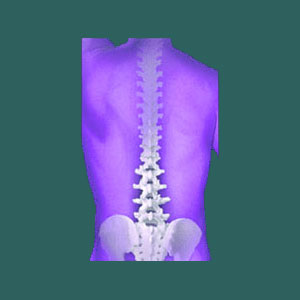
Sacroiliac stretches work in conjunction with exercises to treat various soft tissue conditions, such as hypermobility and hypomobility. Stretches are a crucial part of virtually all physical therapy routines and can be very effective when used appropriately for indicated conditions. In fact, of all chronic dorsalgia syndromes, sacroiliac disorders respond best to conservative exercise-based treatment, particularly when they consist of joint dysfunction enacted by ligament or muscular issues.
Stretches are a constructive form of therapy that improve general health and certainly have no downsides when compared to drug, injection or surgical treatments. However, stretches are far less effective, as are exercises, for some SIJ diagnoses, including sacroiliitis and pain that is created by various degenerative conditions like rheumatoid arthritis, ankylosing spondylitis and general skeletal joint deterioration.
This narrative explores the use of stretching techniques as part of a sacroiliac treatment program.
Therapeutic Indications for Sacroiliac Stretches
Stretches form the basis of many physical therapy programs and are used to increase the flexibility of particular tissues within the SI joint. Stretches can also be used to improve range of motion in muscular tissues that attach to the pelvis or sacrum that might be contributing to the painful complaint due to imbalances in antagonistic pairings.
Stretches are best known for helping to improve SIJ symptoms associated with hypomobility, which is logical given the diagnosis implies a lack of movement being the causative reason for pain. Often, this restricted joint movement is created by excessive tension in the joint, which can result from muscular imbalances and ligamentous tightness.
However, many hypermobility conditions also benefit from stretches, since although one or more connective tissues might become lax, the remaining ligaments and muscles often work double duty to maintain joint integrity. This can make these fatigued tissues become extremely tense. This excessive tension must be managed with stretches, just as the hyperlaxity expressed by other tissues must be managed with targeted exercise, prolotherapy injections or surgical therapies.
Effectiveness of Stretching and PT
Stretches combined with sacroiliac exercises can effectively completely cure many soft tissue-related SIJ disorders, including many cases of sacroiliac joint dysfunction. Stretches will likely need to be performed for an extended timeframe in order to achieve maximum efficacy and may even have to be continued for life to ensure proper ongoing joint flexibility and symptomatic prevention.
Most physical therapists will instruct their patients how to perform various exercises and stretches at home, both in between professional treatment sessions, as well as after ending formal PT. Patients are advised to pay close attention to everything their PT and PTA ask them to do when stretching or exercising, so that they can take a more proactive role in self-care, which is both economical and effective for improved therapeutic outcomes.
Limitations of Sacroiliac Stretches
Stretches, just like exercises, are limited in use for many sacroiliac disorders. These conservative therapeutic interventions will typically have little effect on cases of joint inflammation, structural degeneration or skeletal injury. In fact, stretches and exercises might be very painful for some patients to perform and might even cause damage to compromised joints.
Since the diagnostic process for sacroiliac disorders is highly subjective, care providers are warned to begin the use of physical therapy modalities cautiously, since many cases are misdiagnosed. Remember that many structural joint issues do not provide any verifiable evidence of their existence and might mimic soft-tissue dysfunction in symptomology. Therefore, begin stretching and exercise programs slowly and with full supervision to ensure that patients do not suffer ill effects from these normally helpful treatments.
Likewise, hypermobility and hypomobility issues can often be confused or even may exist in tandem with one another in contrasting tissues of the joint. Caregivers must be certain which tissues need stretching and which require tensioning in order to provide satisfying patient results We have seen many patients who were stretching the wrong tissues, exercising the wrong tissues and getting worse with each session, due to caregiver negligence and a general lack of progress reporting on the part of the therapist.
Sacroiliac Joint Pain > Sacroiliac Exercises > Sacroiliac Stretches





